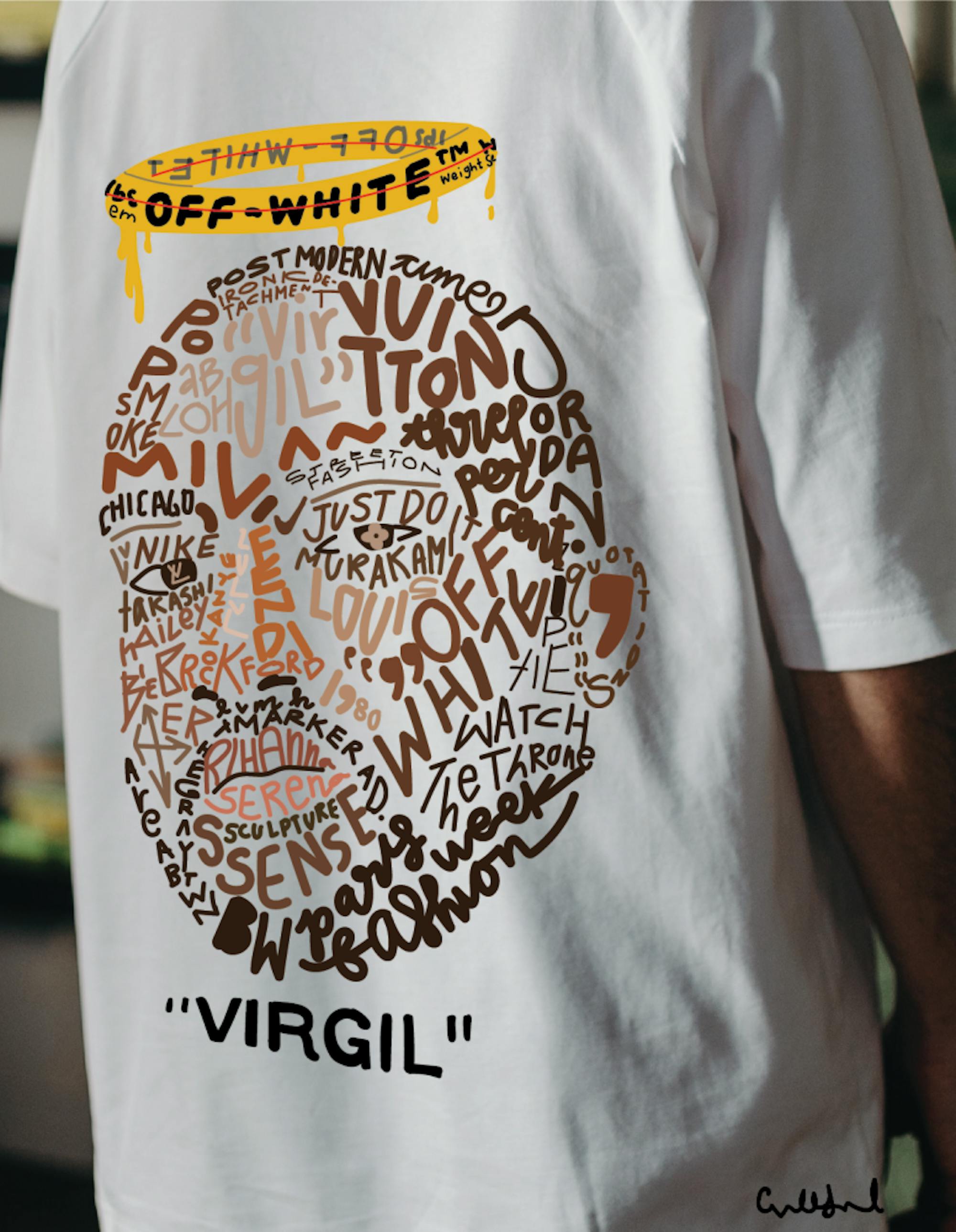“Being displayed in museums and staying in the streets: that is true glory,” Sophie Fontanel wrote on Giorgio Armani. I would argue this quote suits Virgil Abloh as much, if not more — a man who grew to become one of the most popular designers on Earth. Virgil Abloh, the artistic director of Louis Vuitton, founder of Off-White and a unique force in the fashion industry, passed away last week at the young age of 41, victim to a cancer he had been privately fighting. While Abloh was a master of social media, gaining success as he publicized his brand on various platforms, he was able to protect his private life, highlighting the resilience with which he soldiered on while facing such a ruthless disease. Just as impressive was his versatility in his work. Indeed, the Illinois native never restricted himself to the medium of clothing. Far from it.
When Abloh and Kanye West visited Paris Fashion Week in 2009, they famously posed outside the Comme des Garçons show in extravagant outfits. Back then, they were newcomers: foreigners in a world of high fashion that was, and still is,lacking in diversity. But fresh with his architectural and hip-hop references, Virgil Abloh plunged into the archives of streetwear and started building it up for the runway. Pyrex Vision, his first brand, screen printed relatively cheap Ralph Lauren shirts with bold graphics and resold them for eye-watering prices. After selling through his stock, Abloh shuttered the brand, deeming it an artistic experiment that had run its course.
It wasn’t long before Abloh established an even greater impact on the world of fashion. Founded in 2013, Off-White became a behemoth. Its quotation marks, iconic fonts and graphics are recognizable anywhere, constantly bootlegged for all kinds of different merchandise. Virgil Abloh built a luxury streetwear brand, placing graphic sweatshirts alongside the conventional leather handbags on runways. He became one of the most in-demand designers.
The fashion world finally noticed, and he became the first Black man to lead iconic French brand Louis Vuitton’s menswear collection. His appointment made waves in the fashion sphere and set an important precedent. Virgil Abloh's premature passing leaves Balmain’s Olivier Rousteing as the only Black designer at the helm of a major European luxury fashion house: We can hope that his and Virgil’s success will encourage more diversity in future hirings.
Later into his career, Abloh moved toward purely artistic endeavors, curating an exhibition that traveled through the world’s biggest modern art museums. I had the privilege of seeing Abloh’s “Figure of Speech” exhibition at Boston’s Institute of Contemporary Art a few months back, and it struck me as remarkable. Virgil chose to display prototype shoes alongside conventional installations, designating them both as art pieces in their own right. Abloh even presented products he created for Nike and furniture giant IKEA, giving trivial objects such as rugs and shoes artistic value through a process that was entirely his own.
Abloh hijacked architectural and modernist design concepts and injected them onto these products. For example, a rug he designed for IKEA, printed with a giant receipt on the rug itself in a tasteful "mise en abyme." Virgil was criticized due to the lack of apparent originality in his work, but seeing potential in such simple ideas and brilliantly making them into a commercially viable product is a genuine artistic achievement. Indeed, his IKEA rug features the actual retail price of the rug as part of its print, which acts into an implicit, albeit potent, criticism of consumerism when the carpet sells for six times that price on specialized marketplaces.
Following in the footsteps of artist Jean-Michel Basquiat, who is often credited with having opened the door of contemporary art museums to 'street art,' Abloh has further pried open that same door. He built up streetwear and street culture into a new artistic genre, a duality that Abloh injected into its philosophy. He purposefully created scarcity and desirability, whereby buying an Off-White piece made you purchase a part of Abloh's art. The fashion items you wearand the sculptures you look at in museums are one and the same, with catwalks becoming as effective a forum for exhibitions as conventional art centers.
Abloh blended the strictly defined borders between the design and marketing of his products, making retail elements such as the iconic Off-White tag an inherent part of his creations. Customers that wear Off-White are in many ways living billboards for the brand. However, Abloh’s symbolism prevents these items from just being boring monograms or tacky logos, instead turning them into statements of their own.






